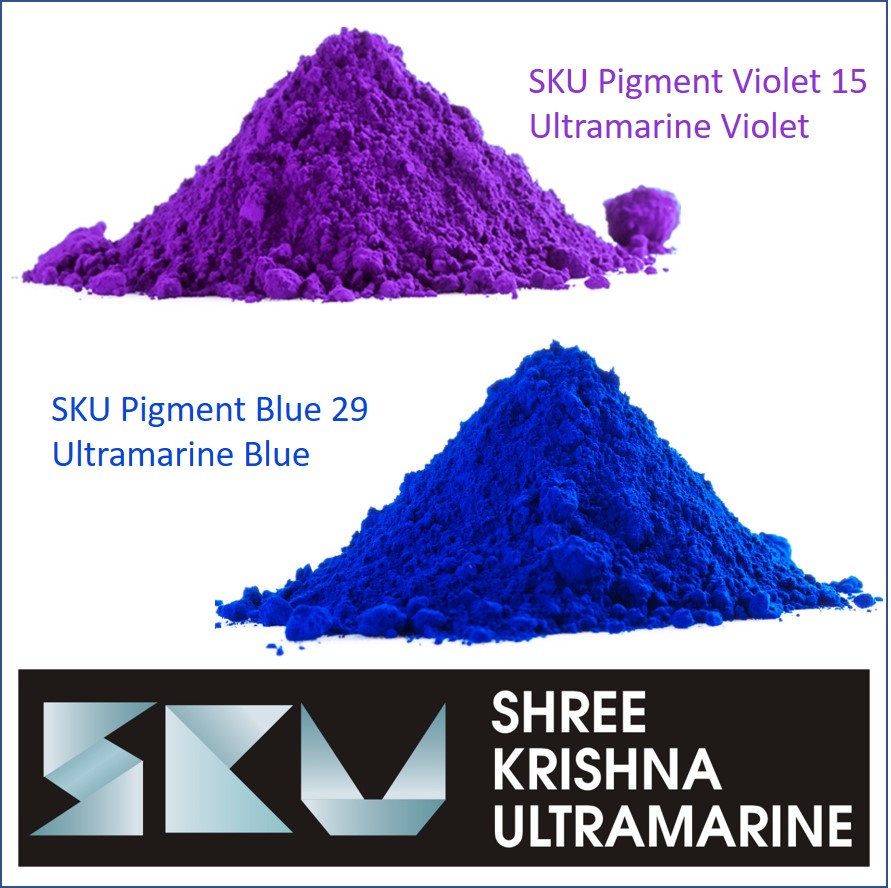Ultramarine Pigments: From Ancient Art to Modern Industry

For thousands of years, color has influenced art, design, and industry. Among the most celebrated hues, Ultramarine remains unmatched for its depth and richness. Today, companies like SKU Pigments specialize in manufacturing high-quality Ultramarine pigments, including Ultramarine Blue, Ultramarine Violet, Pigment Blue 29, and Pigment Violet. From paints and plastics, Ultramarine has become the standard of modern blue pigments.
The History and Significance of Ultramarine
The name Ultramarine comes from the Latin “ultra mare,” meaning “beyond the sea,” a reference to lapis lazuli originally imported from Afghanistan. For centuries, it was worth more than gold, used by Renaissance masters to depict divine subjects. It symbolized luxury and spirituality.
Modern chemistry made it possible to manufacture Ultramarine pigments, bringing the once-exclusive shade into everyday use. This breakthrough turned a exclusive pigment into a widely available solution for countless sectors.
The Versatility of Pigment Blue 29
Ultramarine Blue pigments—the synthetic form of Pigment Blue 29—are the most widely used. Known for their stability, they are safe, eco-friendly, and non-toxic. They are used in:
• Architectural and industrial paints for rich tones.
• Plastics and rubber, thanks to UV resistance.
• Inks and printing, where precision is vital.
• Cosmetics, given their safety profile.
This balance of durability and eco-friendliness keeps Ultramarine Blue among the top pigments.
The Elegant Appeal of Violet Shades
Ultramarine Violet offers softer tones that appeal in cosmetics. Pigment Violet derived from Ultramarine is highly dispersible, making it ideal for eco-friendly materials.
Its sophisticated tone enhances fine art, while ensuring stability without chemical breakdown.
How Pigment Blue 29 Powers Industries
Pigment Blue—particularly Ultramarine Blue pigments—remains a market leader. It offers weather resistance for:
• Car finishes with brilliant sheen.
• Branding, ensuring stable shades.
• Decorative plasters, adding functionality and design.
This multi-industry demand ensures Pigment Blue’s staying power.
Advantages of Ultramarine Pigments
• Non-Toxic & Safe: Certified safe for consumer goods.
• Heat & Light Resistant: Stable in outdoor use.
• Eco-Friendly: Manufactured with sustainability.
• Cost-Effective: Budget-friendly industrial choice.
• Versatile: Across paints, plastics, printing, and construction.
Where Ultramarine Pigments Shine
1. Paints & Coatings: Durable architectural shades.
2. Plastics & Rubber: Safe Ultramarine Blue for packaging.
3. Cosmetics: Eyeshadow and nail polish.
4. Construction: Flooring products.
5. Printing & Inks: Vivid packaging inks.
Why Choose SKU Pigments?
SKU Pigments leads the market, offering eco-conscious solutions in Ultramarine pigments. Their product portfolio includes:
• Pigment Blue 29 for vibrant, bold applications.
• Ultramarine Violet and Pigment Violet for elegance and subtlety.
• Custom shades for specialized markets.
Their reputation is built on consistent quality and sustainable methods.
Ultramarine: From Heritage to High-Tech
From lapis lazuli origins to the backbone of blue pigments, Ultramarine has remained relevant for centuries. Whether it’s the classic brilliance of Ultramarine Blue, the subtle elegance of Ultramarine Violet, or the stability of Pigment Blue 29, Ultramarine pigments remain indispensable.
With SKU Pigments as a leading manufacturer, industries secure reliable pigment supply. As demand for eco-friendly pigments rises, Ultramarine will lead in global markets.
Common Queries About Ultramarine
1. What is Ultramarine?
One of the world’s most trusted synthetic pigments.
2. What is Pigment Blue 29?
The standard code for Ultramarine in industries.
3. Where is Ultramarine Violet used?
In eco-friendly and children’s products.
4. Are Ultramarine pigments safe?
Certified safe for cosmetics and toys.
5. Why choose SKU Pigments?
Because of quality, eco-focus, and range.